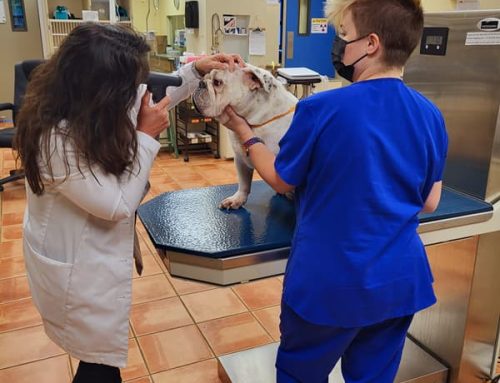 Pets are like humans. They have allergies to all sort of things – including food. By being exposed to the same foods over and over, some sensitive dogs or cats can develop allergies. The most common food allergens for dogs and cats are chicken, beef, corn and wheat. Not so coincidentally, these food products make up the top ingredients in all commercial pet foods. And it’s harder to avoid them than you might think.
Pets are like humans. They have allergies to all sort of things – including food. By being exposed to the same foods over and over, some sensitive dogs or cats can develop allergies. The most common food allergens for dogs and cats are chicken, beef, corn and wheat. Not so coincidentally, these food products make up the top ingredients in all commercial pet foods. And it’s harder to avoid them than you might think.
Fish flavored chicken. Even when a pet food is labeled as “fish,” you may find that the primary ingredient is fish-flavored chicken. You’ll also find lamb-flavored beef or chicken when you read the small print closely. So read the label, then read the ingredients to know what your pet is really eating.
Allergic reactions. Food allergies may manifest in symptoms ranging from itchiness to respiratory problems to digestive woes. If your pet suffers from a chronic problem, talk to us. We’ll help you narrow down the culprit, and come up with a plan to help ease the problem.
Here are our most common solutions for pets with food allergies:
1. Change your pet’s diet. Town N Country stocks the following lines because of their quality:
a. Instinct. Rest assured that this pet food line contains very limited ingredients and is grain-free. Ingredients include exotic proteins like rabbit, duck and bison.
b. Purina HA. Depend on hypo-allergenic dog food available by prescription.
c. Hills ZD. Change to a pet food with hydrolyzed (or broken down) protein which is easier to digest and available by prescription.
2. Conduct a food trial.
a. When you switch foods, your pet needs to be fed the new food exclusively for 8-12 weeks. You can’t give treats, and you can’t slip them anything under the table. By feeding them the new diet, you’re essentially detoxing your pet’s digestive system.
b. After the prescribed time (8-12 weeks) give a piece of chicken (or the suspected food) and see if they react.
It will take a little detective work and probably some slight changes in diet, but it will pay off in the end. In the meantime, we’ll suggest things that can help your pet feel much more comfortable. And that will make you more comfortable, too!





